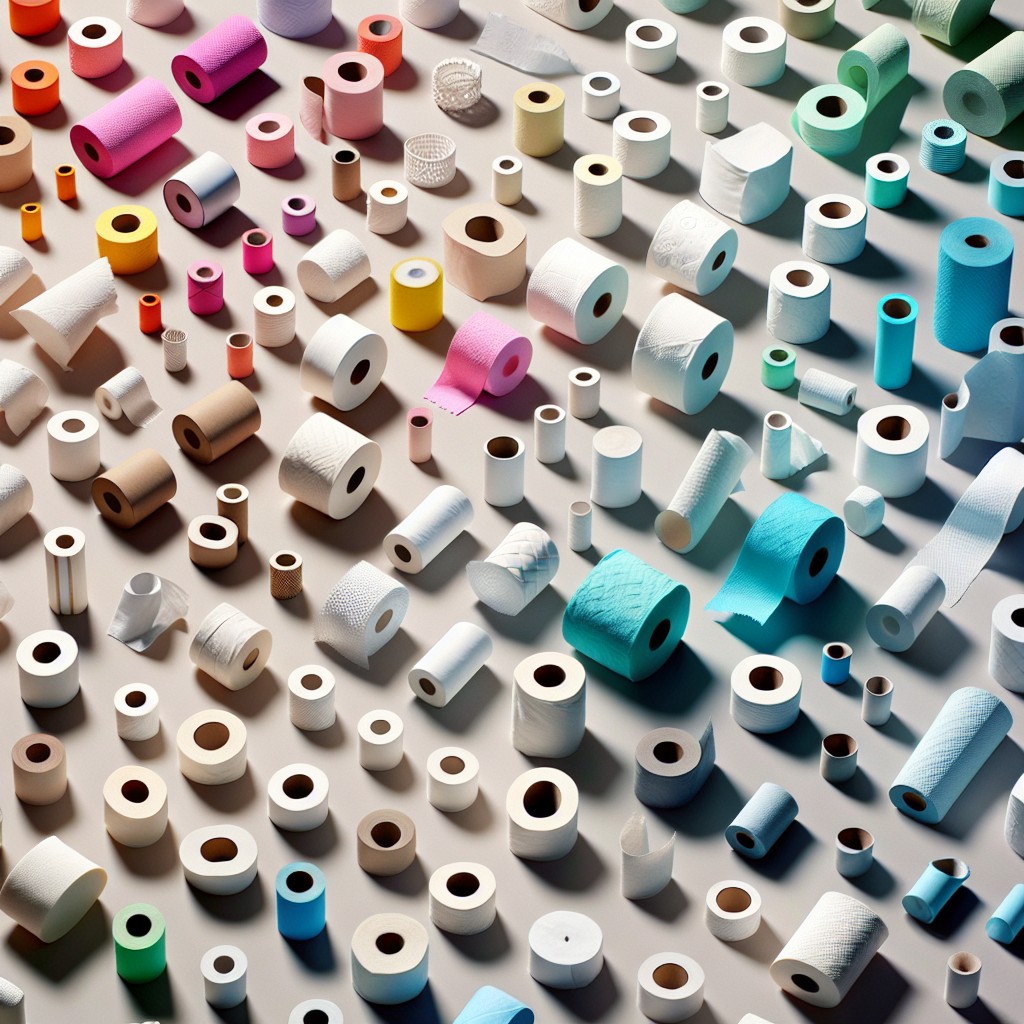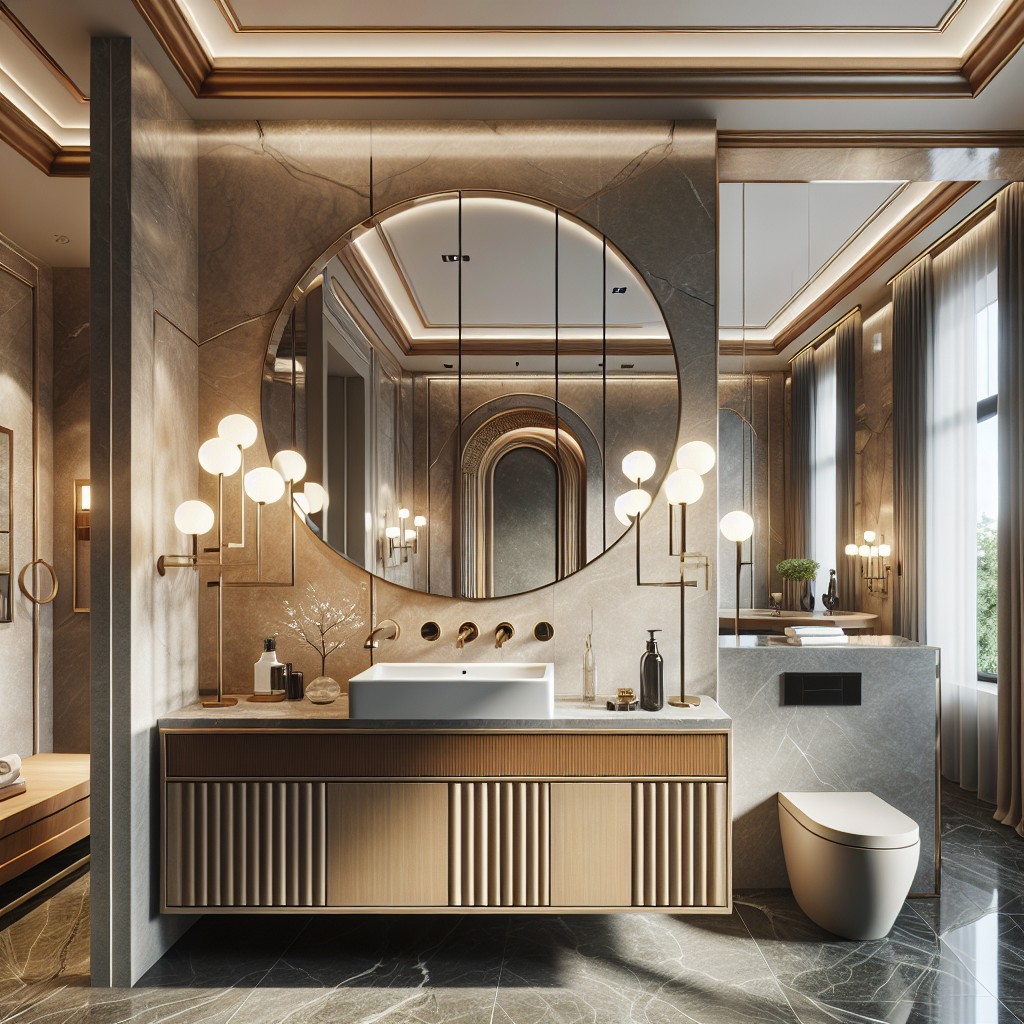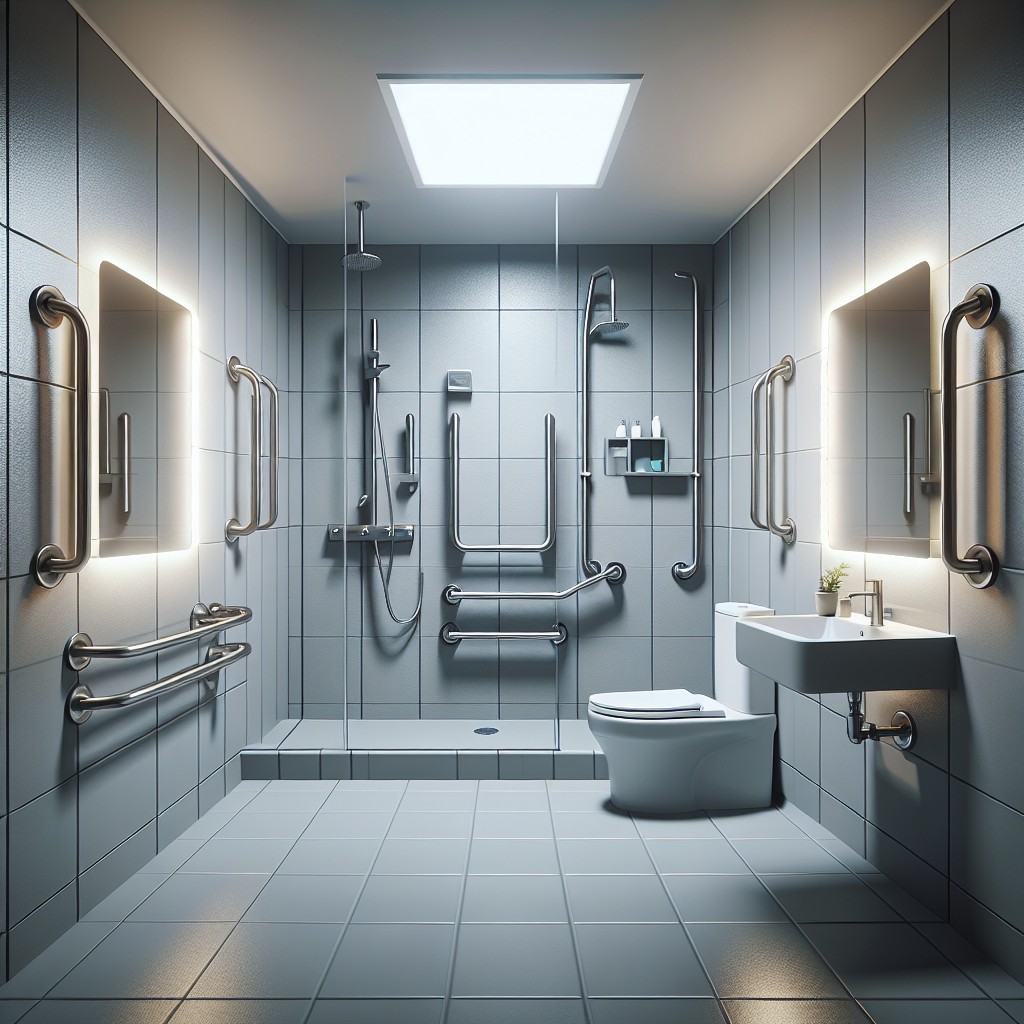Last updated on
Understanding when it’s safe to shower after painting your bathroom is vital, because a misstep could ruin your fresh coat, so this blog post is dedicated to comprehensively guiding you through the waiting period, necessary precautions, and maintenance tips.
Diving into a painting project in your bathroom adds a fresh look to your space but diving into a shower too soon afterward can spoil the finish. Understanding the crucial waiting period before you can bask in your newly painted bathroom without damaging the paint job is essential.
Whether you’ve just added a vibrant splash of color or a serene hue, this guide ensures your walls stay pristine and that your eagerness to rinse doesn’t lead to repainting.
From leveraging air circulation to timing your paint project with the weather, get ready to discover all the details you need to confidently shower in your freshly painted bathroom, ensuring the paint adheres properly and looks great for the long haul.
Key takeaways:
- Wait at least 24 hours before showering in a freshly painted bathroom.
- Use fans or open windows to circulate air and reduce drying time.
- Aim to paint on low humidity days to speed up drying.
- Wait until the paint feels fully dry to the touch before showering.
- Follow specific drying times recommended by the paint manufacturer.
What's Inside
General Waiting Period After Painting Bathroom
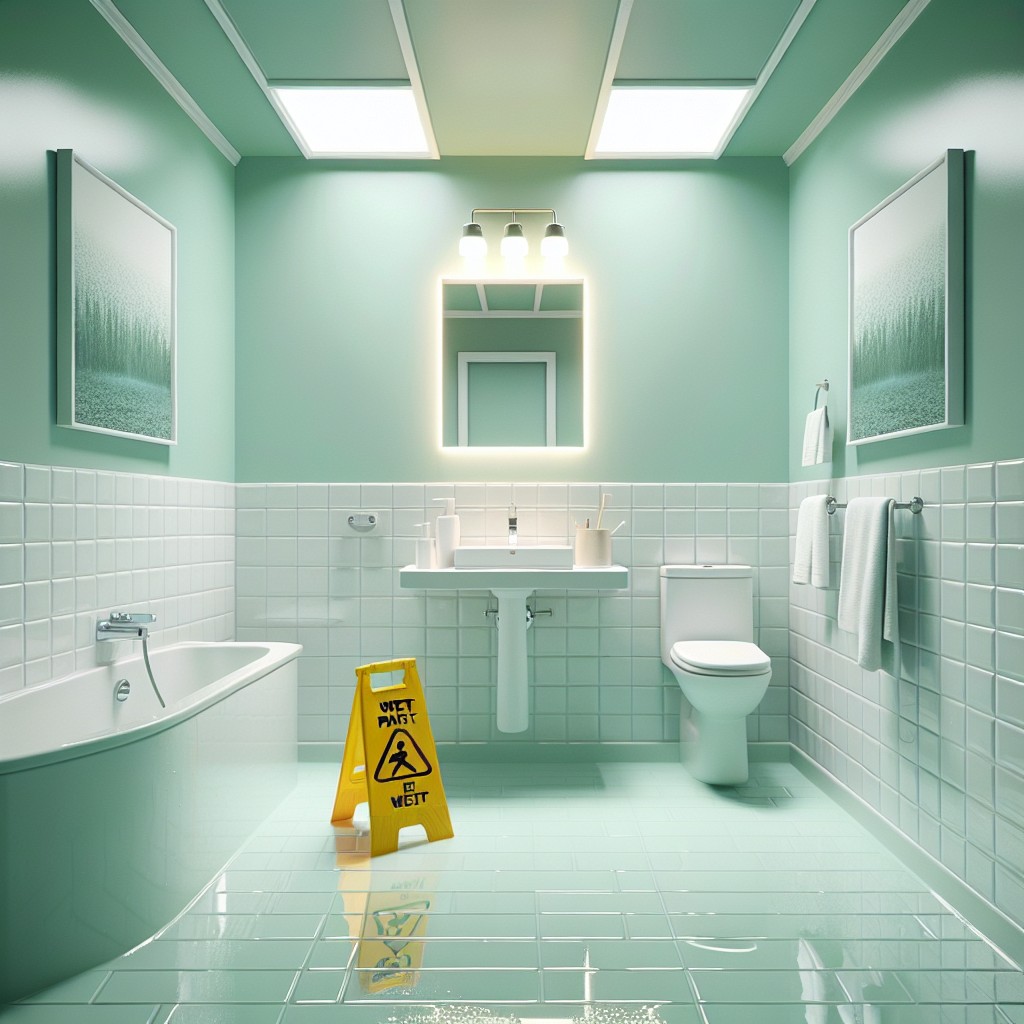
After freshening up your bathroom with a new coat of paint, it’s tempting to jump straight into enjoying the revamped space. However, patience is key to ensuring proper adhesion and durability of your paint job. Here are some points to consider:
1. Standard Wait: As a rule of thumb, waiting at least 24 hours before showering in a freshly painted bathroom is a safe bet.
2. Ventilation Matters: Well-ventilated bathrooms allow paint to dry faster. Use fans or open windows to circulate air and reduce wait times.
3. Humidity Levels: High humidity can extend drying time. Aim to paint on days with lower humidity when possible.
4. Touch Tactics: If the paint feels dry to the touch, it might be tempting to shower, but it may not be fully set. When in doubt, wait a bit longer.
Remember, these guidelines are just a starting point. Specific drying times depend on the type of paint used and the conditions in your bathroom.
The Different Drying Times
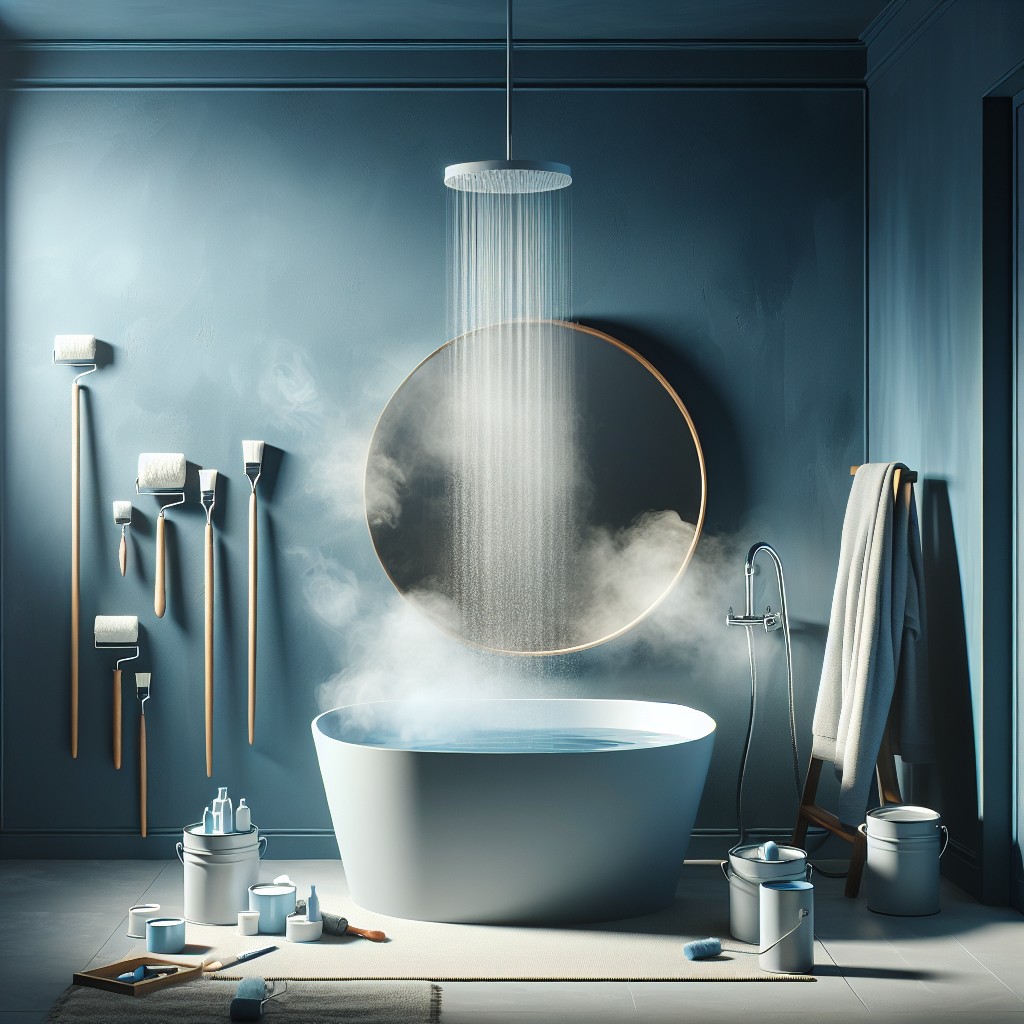
Understanding the varying drying times of different paint types is crucial for a successful paint job. Oil-based paints generally take longer to dry, often requiring 24 hours before a re-coat can be applied, and even longer to fully cure. On the other hand, water-based, or latex, paints dry faster because they’re made with water that evaporates quickly. You can usually touch them within an hour and apply a second coat after four hours.
However, these are just guidelines, and actual drying times can be affected by factors such as humidity, ventilation, and temperature. High humidity can slow down the drying process, while a well-ventilated room with a consistent, warm temperature can speed it up. Always check the paint can for the manufacturer’s recommended drying times as they may vary between products.
Oil-based Paint
For enduring a high-moisture environment like a bathroom, oil-based paint is a trusty option. Expect a longer drying time compared to its water-based counterpart, typically around 24 hours for the surface to become dry to the touch. However, the wait isn’t over yet. To ensure it’s fully set and resistant to the steam and humidity of a shower, a full cure can take anywhere from 7 to 14 days.
Monitor the room temperature and humidity levels, as cooler and more humid conditions can extend these timeframes. Keep the area ventilated – it will not only aid in the paint drying but also help dispel the stronger fumes associated with oil-based products. For those with a sole bathroom, consider scheduling your painting project to align with a time when you have alternative showering options.
Water-based Paint
When dealing with water-based, or acrylic, paints, your shower downtime decreases considerably. These paints are famous for their quick-drying properties. On average, it only takes about an hour or two for the surface to be dry to the touch. However, before bringing humidity and water back into the mix, a good rule of thumb is to wait a full 24 hours. This buffer ensures the top layer has truly settled.
It’s key to acknowledge that while the paint feels dry, the underneath layers might still be in the drying process. Shower steam could interfere with this, potentially causing the paint to bubble or streak. To err on the side of caution, especially in bathrooms with less ventilation, extending that wait time to 48 hours can provide extra assurance for a fully set paint job.
Keeping a fan running or a window open in the bathroom can speed up the drying process of water-based paints. These paints are less likely to emit strong odours, but proper air circulation is always beneficial for a perfect finish.
What You’ll Want to Avoid
Ensuring the newly painted bathroom walls remain pristine means steering clear of certain actions during the drying period. Keep the bathroom free from moisture, as steam from hot showers can impede the drying process by increasing humidity. This can lead to streaks or a splotchy finish.
Additionally, resist the temptation to touch or wipe the walls. Your paint might feel dry to the touch shortly after application, but it’s still vulnerable to fingerprints and smudges. It’s also wise to avoid using the fan or heating in the bathroom until the paint has adequately dried, as these can circulate dust and other particles that may stick to the wet surface.
Lastly, keep the bathroom off-limits for pets and children; their curiosity could lead to scratches or stains that are difficult to fix on tacky paint.
Drying Vs. Curing: What’s the Difference?
Understanding the distinction between drying and curing is essential when dealing with paints. Drying refers to the point when the paint is no longer wet to the touch. This surface-level phase happens when solvents in the paint evaporate, allowing you to lightly use the painted area without leaving fingerprints or smudges.
On the other hand, curing goes deeper. It’s the process where the paint’s chemical properties reach their full potential for durability and hardness. During curing, the paint film solidifies completely, adhering to the surface robustly. This phase is crucial for areas like bathrooms, where moisture and wear are commonplace.
Typically, the curing process takes significantly longer than drying. Depending on conditions such as ventilation, temperature, and humidity, curing can range from a few days to several weeks. It’s the true test of patience but waiting for complete curing ensures maximum paint performance and longevity.
Paint Drying Tips & Tricks
Maximize ventilation by opening windows or employing fans; this promotes airflow and can significantly hasten the drying process. Just ensure dust or debris won’t mar your fresh paint job.
Maintain a consistent room temperature; too cold and the paint dries slowly, too hot and it may crack or peel. Around 70°F with a relative humidity below 50% is ideal.
Apply thin layers; they dry quicker than thick ones. If a second coat is needed, wait for the first one to dry completely.
Stick to the manufacturer’s recommended drying times; these are based on optimal conditions, and adhering to them provides the greatest chance for a smooth, enduring finish.
Consider a paint conditioner; additives can improve flow and leveling and might reduce overall drying time without affecting the paint quality.
Patience is key; trying to expedite the drying process too much can compromise the longevity and appearance of your paintwork. A little extra wait can lead to much better results.
Temporary Shower Solutions for While You Wait
If you’re caught in the sticky situation where your bathroom is out-of-bounds, consider these temporary shower solutions to stay fresh:
1. Gym Membership: Utilize local gym facilities. It’s a great way to stick to your fitness regimen and use the showers.
2. Portable Shower: Rent or purchase a portable shower. They’re especially handy for outdoor enthusiasts and can be set up with ease.
3. Neighborhood Pool: Often, community pools have shower facilities. Check your local pool for shower access during your bathroom downtime.
4. Friends and Family: Reach out to a neighbor, friend, or family member. They’re likely to empathize with your renovation woes and offer their shower.
5. Campsite Facilities: Some campsites offer shower facilities. If you’re in for a little adventure, it could be a fun, makeshift option.
Being mindful of these solutions can make the wait less inconvenient and keep your routine uninterrupted as your bathroom paint dries to perfection.
FAQ
When can I shower after painting my bathroom?
After painting your bathroom, it is safe to shower after a minimum of 48 hours to allow the paint to sufficiently dry, though normal bathroom use can resume after one week.
Will paint hold up in a shower?
Yes, paint can hold up in a shower if you opt for high-gloss, semi-gloss, or satin paints as they resist moisture better and are easier to clean.
How long does bathroom paint last?
Bathroom paint typically lasts between 3 to 4 years, but this can extend to 4 to 6 years for less frequently used bathrooms.
How long does it take to paint a bathroom?
Painting an average-sized bathroom, including preparation, application of two coats of paint, and drying time, generally takes about four to five hours.
What precautions should I take while painting a shower wall?
Ensure the shower wall is clean and dry, use high-quality waterproof paint, apply primer before painting, and allow ample drying time to avoid streaks or smears.
Is there a specific type of paint that works best in humid conditions?
Yes, acrylic and latex paints are typically the best options for use in humid conditions due to their water resistance and durability.
How can I ensure my bathroom paint job is durable and sustainable?
To ensure your bathroom paint job is durable and sustainable, use high-quality, moisture-resistant paints, apply a primer before painting, and let each coat dry thoroughly before applying the next one.


